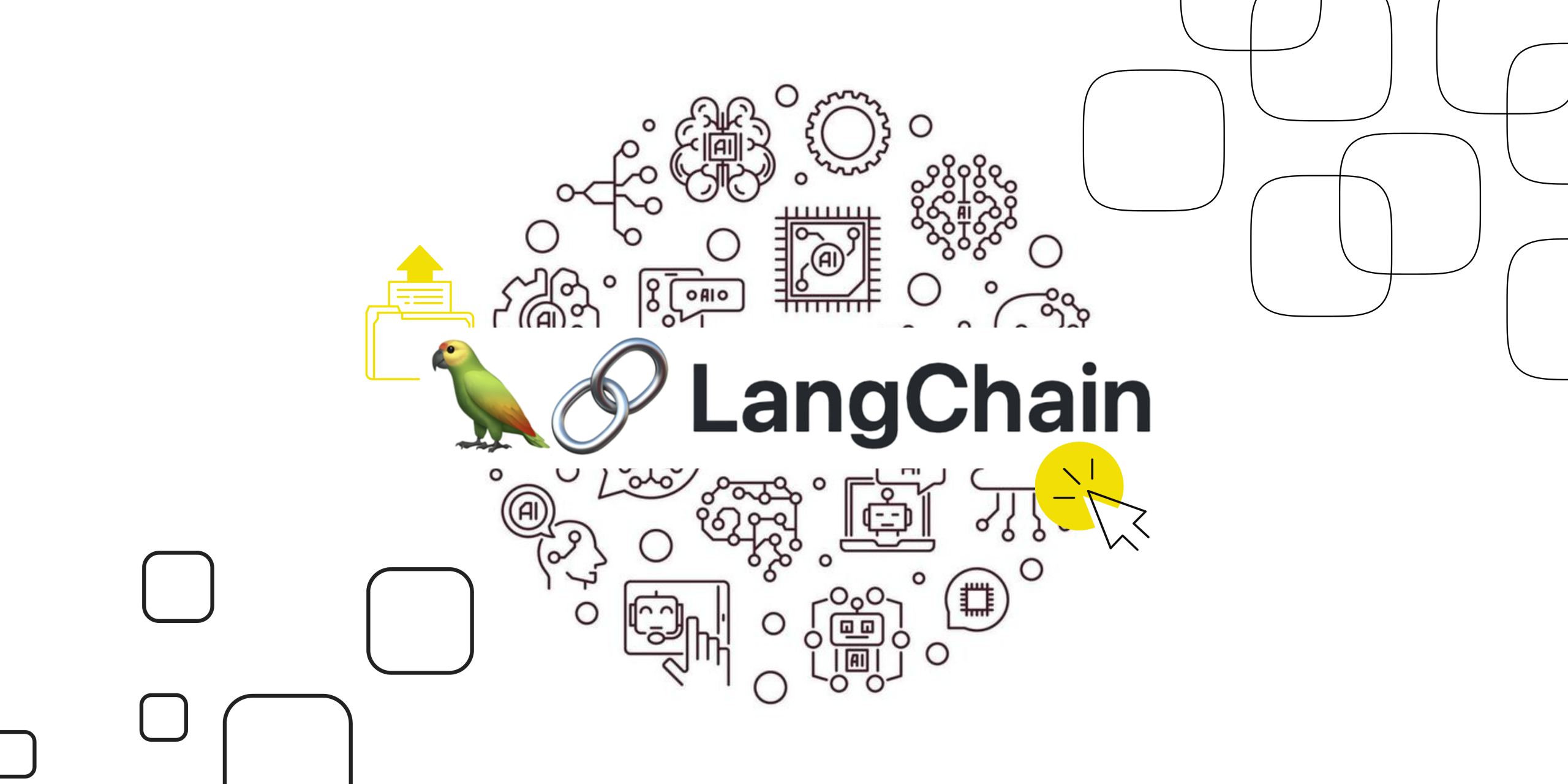LangChain has transformed how developers build AI applications today. Moreover, this powerful framework connects large language models (LLMs) with external data sources seamlessly. Additionally, LangChain provides essential tools for creating context-aware applications quickly. Furthermore, developers use LangChain to enhance LLMs like GPT-4 and Claude with specific knowledge bases, private databases, or even live APIs. Consequently, applications built with LangChain can reason over particular information rather than relying solely on general knowledge. Thus, LangChain serves as a bridge between powerful language models and practical real-world applications. In fact, many developers consider LangChain indispensable for modern AI development workflows, particularly for production-grade projects where accuracy and reliability are critical.
Defining LangChain and Its Critical Importance
LangChain is an open-source framework for building LLM-powered applications. Harrison Chase created it in October 2022. Since then, it has grown rapidly with thousands of contributors and a vibrant ecosystem of tools, plugins, and community support. Above all, LangChain solves key limitations of standalone language models that otherwise struggle with real-time information, tool use, and specialized knowledge.
Firstly, LangChain connects LLMs to external data sources, making models far more versatile. Secondly, it allows models to interact dynamically with APIs, tools, and databases, unlocking a world of functionality. Thirdly, it provides structured workflows that organize complex chains of reasoning logically and transparently. Additionally, LangChain offers standardized interfaces for different language models and services, enabling interoperability.
Therefore, developers can build applications that remain model-agnostic. Consequently, these applications can adapt easily to future AI advancements, avoiding lock-in to a single provider. Furthermore, LangChain makes development faster and less error-prone through its highly modular and composable components. Hence, both beginners and experts can build sophisticated AI applications efficiently — from simple chatbots to multi-step agents coordinating tasks across multiple systems.
Foundational Constructs Within LangChain
LangChain consists of several essential components working together harmoniously. Subsequently, these components create the foundation for powerful, flexible, and scalable applications.
-
Models: These wrappers provide standardized interfaces for various LLMs. As a result, developers can easily switch between different providers like OpenAI, Anthropic, Hugging Face, or even custom in-house models. This flexibility allows experimenting without rewriting core logic.
-
Prompts: Meanwhile, prompt components help craft structured and highly effective instructions for language models. Therefore, applications can communicate clearly with LLMs, ensuring better quality outputs. Furthermore, prompt templates, partials, and output parsers structure these interactions intelligently and consistently.
-
Memory: Similarly, memory components maintain conversation history or contextual data across multiple interactions. Thus, applications can deliver coherent, dynamic, and personalized experiences over time, even across complex dialogue trees.
-
Chains: Likewise, chains sequence multiple operations between components, connecting inputs, retrieval steps, prompt construction, model calls, and post-processing. Consequently, information flows smoothly and predictably from one step to the next, enabling sophisticated workflows.
-
Tools: In addition, tool interfaces empower LLMs to interact with external systems, such as web browsers, SQL databases, or proprietary APIs. For example, models can pull real-time stock prices, submit support tickets, or search knowledge graphs on the fly.
-
Agents: Moreover, agent systems decide which action to take using LLM reasoning. Hence, they combine multiple tools and sophisticated decision-making loops, enabling applications to tackle open-ended, multi-step problems flexibly.
-
Retrievers: Furthermore, retrievers locate and return the most relevant chunks of external knowledge quickly. As a result, applications can access specific information bases — such as customer documents, academic research, or policy manuals — without overwhelming the model.
-
Document Loaders: Finally, document loaders import and preprocess content from various sources and formats (PDFs, web pages, databases). Therefore, bringing external data into LangChain applications becomes seamless and highly customizable.
Collectively, these components allow developers to craft AI solutions that are both contextual and action-driven — a major leap beyond static, single-prompt chatbot system
How does LangChain work?
LangChain operates through a well-structured, modular workflow that simplifies complexity while offering full control to developers.
- Input Processing
The process begins with LangChain receiving input from the user or system, which could be in the form of a question, instruction, or trigger. This input serves as the foundation for further processing. - Prompt Construction
Once the input is captured, LangChain uses templates to format it into highly structured prompts. These prompts are specifically tailored to be suitable for the target language model (LLM), ensuring clarity and effectiveness. - Model Interaction
The structured prompts are then sent to the selected language model via standardized APIs or SDKs. This interaction ensures smooth communication between LangChain and the LLM, facilitating seamless responses. - Response Handling
Once the LLM generates a response, LangChain takes over by parsing, evaluating, and routing the response to the next stage of the workflow. This stage ensures that the generated content is used appropriately within the application. - External Data Integration
When external knowledge is required, LangChain employs a systematic approach. Document loaders import content, such as PDFs, websites, or APIs, into the system. This content is then processed using chunking strategies, which break it into meaningful, digestible pieces. Vector stores, such as FAISS, Pinecone, or Chroma, embed and index these chunks for fast and efficient retrieval. When a request is made, retrievers find the most semantically relevant matches and dynamically enrich the prompts. This enables the language model to generate more accurate and context-aware responses. - Agent Loops (Optional)
LangChain also integrates a decision-making framework known as “ReAct” (Reasoning + Acting). The agent starts by observing the current state of the system to gather context. It then moves into the thinking phase, carefully considering the next best action based on available tools and its goal. Once a decision is made, the agent acts by invoking the appropriate tool or API. Finally, the agent reflects on the results, analyzes the outcome, and iterates on the process until the desired goal is achieved.
Why is LangChain important?
LangChain has become crucial for AI development for several compelling reasons. Most importantly, it simplifies complex integration tasks significantly — democratizing access to advanced AI capabilities.
-
Rapid Development: Firstly, LangChain provides pre-built components for connecting LLMs with tools, APIs, databases, and custom workflows. Therefore, developers save substantial time and effort compared to building integrations from scratch.
-
Context Management: Secondly, LangChain’s strong memory and retrieval systems enable highly contextual and coherent conversations. Consequently, applications become smarter, delivering experiences closer to human-like understanding.
-
Tool Use Expansion: Additionally, LangChain enables LLMs to perform actions beyond text generation, such as searching the web, booking appointments, or executing code snippets. As a result, AI shifts from “text prediction” to “autonomous task completion.”
-
Modularity and Flexibility: Furthermore, LangChain’s design philosophy favors small, interchangeable parts. Hence, applications become more maintainable, customizable, and extensible over time.
-
Community and Ecosystem: Moreover, LangChain thrives as a dynamic open-source project, supported by a fast-growing ecosystem of extensions, integrations, and templates. Consequently, developers benefit from shared knowledge and continuous innovation.
-
Future-Proof Architecture: Above all, LangChain anticipates the evolving nature of LLMs and hybrid architectures (e.g., retrieval-augmented generation or agent-based systems). Thus, it offers a stable foundation in an otherwise rapidly shifting AI landscape.
In short, LangChain has redefined what is possible with language models — empowering developers to create smarter, action-oriented, and deeply contextual AI applications.
Practical Illustration
Let’s examine how LangChain powers a customer support assistant. First, document loaders import product manuals and FAQs. Then, the system processes these documents into chunks.
Next, these chunks convert to vector embeddings. Subsequently, a vector database stores these embeddings efficiently. When a customer asks a question, the system converts it to an embedding. After that, it retrieves relevant document chunks based on similarity.
Then, a chain combines the original question with retrieved information. Consequently, it creates a comprehensive prompt for the language model. Finally, the model generates a helpful, contextual response. Meanwhile, the system maintains conversation history for continuity.
This example demonstrates LangChain’s practical benefits clearly. Most importantly, it provides accurate, context-aware answers from specific documentation. Therefore, customers receive precise information rather than generic responses.
Conclusion
In conclusion, LangChain has established itself as an essential framework in AI development. Above all, it solves the critical challenge of connecting LLMs to specific data and systems. Furthermore, its comprehensive component suite simplifies building sophisticated applications tremendously.
Moreover, as language models continue advancing, frameworks like LangChain grow increasingly important. Consequently, they provide necessary structure for practical, production-ready applications. Additionally, LangChain works effectively across diverse industries and use cases.
Therefore, whether you’re developing customer support systems or research assistants, LangChain offers valuable tools. Furthermore, it connects models to specific contexts your application requires. Finally, by abstracting away complexity, LangChain democratizes access to advanced AI capabilities. Hence, it accelerates innovation throughout this rapidly evolving field.
FAQs:
1. What programming languages does LangChain support?
Currently, LangChain primarily supports Python and JavaScript/TypeScript. However, the Python version generally offers more features. Meanwhile, the JavaScript version enables building web applications with LLM capabilities.
2. Is LangChain free to use?
Yes, LangChain itself is completely free and open-source. Nevertheless, when connecting to commercial language models like GPT-4, you’ll need to pay for those API calls separately. Therefore, budget planning remains important for production applications.
3. How does LangChain compare to other similar frameworks?
Primarily, LangChain offers a more comprehensive ecosystem than alternatives. Moreover, it features extensive documentation and a large community. While other frameworks might focus on specific aspects, LangChain provides complete tools for LLM application development.
4. Can LangChain work with local language models?
Absolutely. Although many examples use cloud-based models, LangChain supports various local options fully. For instance, it works with Hugging Face transformers, llama.cpp, and other local implementations. Thus, you can build applications with complete data privacy when needed.
5. How can I get started with LangChain?
First, install the library through pip or npm. Then, review the official documentation thoroughly. Next, try the starter tutorials on the LangChain website. Additionally, explore the examples repository on GitHub. Finally, join the community Discord for support. Consequently, you’ll build proficiency step by step.
Stay updated with our latest articles on fxis.ai


